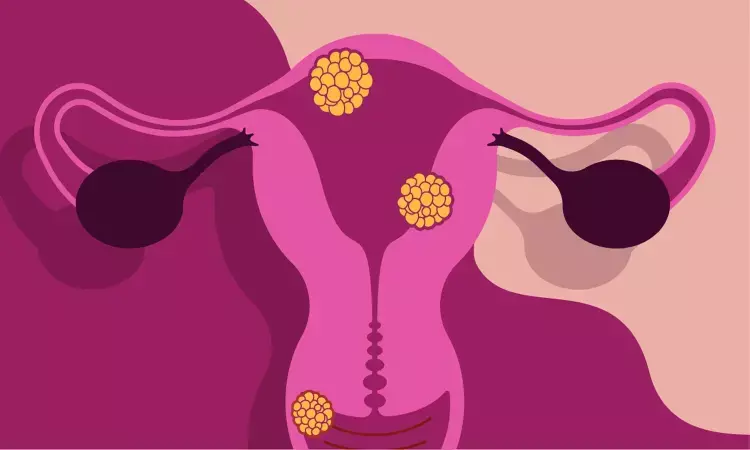- Home
- Medical news & Guidelines
- Anesthesiology
- Cardiology and CTVS
- Critical Care
- Dentistry
- Dermatology
- Diabetes and Endocrinology
- ENT
- Gastroenterology
- Medicine
- Nephrology
- Neurology
- Obstretics-Gynaecology
- Oncology
- Ophthalmology
- Orthopaedics
- Pediatrics-Neonatology
- Psychiatry
- Pulmonology
- Radiology
- Surgery
- Urology
- Laboratory Medicine
- Diet
- Nursing
- Paramedical
- Physiotherapy
- Health news
- Fact Check
- Bone Health Fact Check
- Brain Health Fact Check
- Cancer Related Fact Check
- Child Care Fact Check
- Dental and oral health fact check
- Diabetes and metabolic health fact check
- Diet and Nutrition Fact Check
- Eye and ENT Care Fact Check
- Fitness fact check
- Gut health fact check
- Heart health fact check
- Kidney health fact check
- Medical education fact check
- Men's health fact check
- Respiratory fact check
- Skin and hair care fact check
- Vaccine and Immunization fact check
- Women's health fact check
- AYUSH
- State News
- Andaman and Nicobar Islands
- Andhra Pradesh
- Arunachal Pradesh
- Assam
- Bihar
- Chandigarh
- Chattisgarh
- Dadra and Nagar Haveli
- Daman and Diu
- Delhi
- Goa
- Gujarat
- Haryana
- Himachal Pradesh
- Jammu & Kashmir
- Jharkhand
- Karnataka
- Kerala
- Ladakh
- Lakshadweep
- Madhya Pradesh
- Maharashtra
- Manipur
- Meghalaya
- Mizoram
- Nagaland
- Odisha
- Puducherry
- Punjab
- Rajasthan
- Sikkim
- Tamil Nadu
- Telangana
- Tripura
- Uttar Pradesh
- Uttrakhand
- West Bengal
- Medical Education
- Industry
Persistent chlamydia infections result in Bacterial vaginosis: Study

Greater chlamydia persistence is linked to bacterial vaginosis (BV), says an article published in the Journal of Infectious Diseases. Between diagnosis and therapy, up to 26% of urogenital Chlamydia trachomatis infections resolve on their own. It is uncertain what mechanisms control natural resolution. In order to determine if bacterial vaginosis was linked to increased chlamydia persistence vs spontaneous clearance in a large, longitudinal investigation, Brown and colleagues conducted this study.
The Longitudinal Study of Vaginal Flora tracked women of reproductive age four times a year from 1999 to 2003. After ligase chain reaction testing became available mid-study, baseline chlamydia screening and treatment were started, and unscreened endocervical samples were analyzed after study completion. Between successive visits without the use of chlamydia-active medicines, chlamydia clearance and persistence were determined (N = 320 persistence/N = 310 clearance). Alternating and conditional logistic regression was used to model the relationships between the Nugent score (0-3, no BV; 4-10, intermediate/BV), Amsel-BV, and the persistence vs clearance of chlamydia.
The key findings of this study were;
1. 48% of chlamydia cases (310/630) spontaneously resolved by the subsequent visit.
2. Higher chances of chlamydia persistence were found to be related with Nugent-Intermediate/BV (aOR = 1.89, 95% CI:1.30-2.74), and Amsel-BV (aOR 1.39, 95% CI:0.99-1.96).
3. A within-participant study of 67 subjects with both clearance and persistence intervals revealed a greater correlation with Nugent-Intermediate/BV and chlamydia persistence (aOR = 4.77, 95% CI: 1.39-16.35).
4. Results were unaffected by BV symptoms.
Unfortunately, chlamydia infection rates continue to be unacceptable high despite government recommendations to test all sexually active women under the age of 25 at least once a year. In order to prevent chlamydia in women, new measures are required. Long-term development of novel biotherapeutics, such as probiotics, to prevent chlamydia, facilitate chlamydial clearance, and enhance reproductive health could be influenced by an understanding of the complex factors, including host, pathogen, and microbiome factors, that result in spontaneous clearance of chlamydia.
Reference:
Brown, S. E., Tuddenham, S., Shardell, M. D., Klebanoff, M. A., Ghanem, K. G., & Brotman, R. M. (2023). Bacterial vaginosis and spontaneous clearance of Chlamydia trachomatis in the Longitudinal Study of Vaginal Flora. In The Journal of Infectious Diseases. Oxford University Press (OUP). https://doi.org/10.1093/infdis/jiad142
Neuroscience Masters graduate
Jacinthlyn Sylvia, a Neuroscience Master's graduate from Chennai has worked extensively in deciphering the neurobiology of cognition and motor control in aging. She also has spread-out exposure to Neurosurgery from her Bachelor’s. She is currently involved in active Neuro-Oncology research. She is an upcoming neuroscientist with a fiery passion for writing. Her news cover at Medical Dialogues feature recent discoveries and updates from the healthcare and biomedical research fields. She can be reached at editorial@medicaldialogues.in
Dr Kamal Kant Kohli-MBBS, DTCD- a chest specialist with more than 30 years of practice and a flair for writing clinical articles, Dr Kamal Kant Kohli joined Medical Dialogues as a Chief Editor of Medical News. Besides writing articles, as an editor, he proofreads and verifies all the medical content published on Medical Dialogues including those coming from journals, studies,medical conferences,guidelines etc. Email: drkohli@medicaldialogues.in. Contact no. 011-43720751


